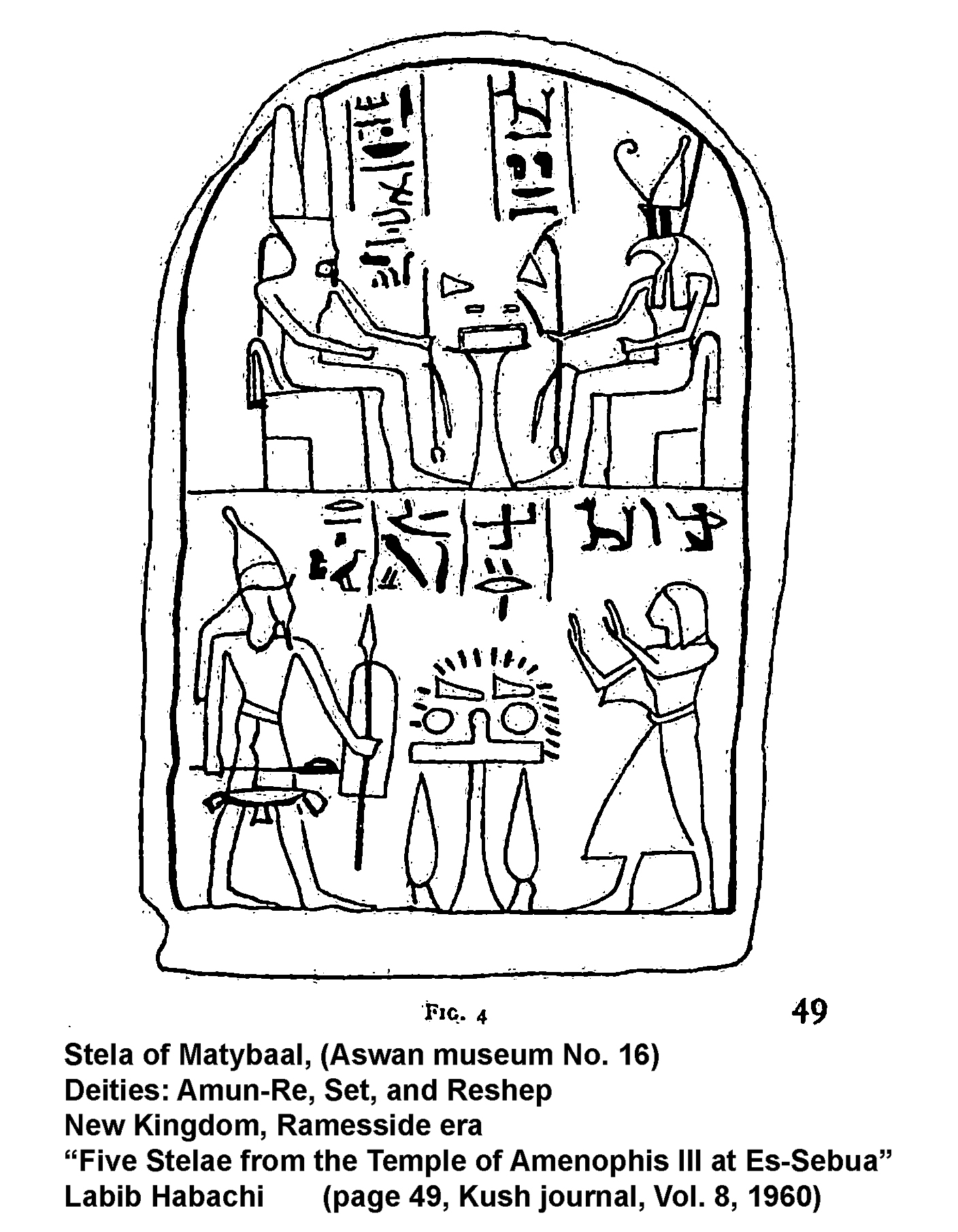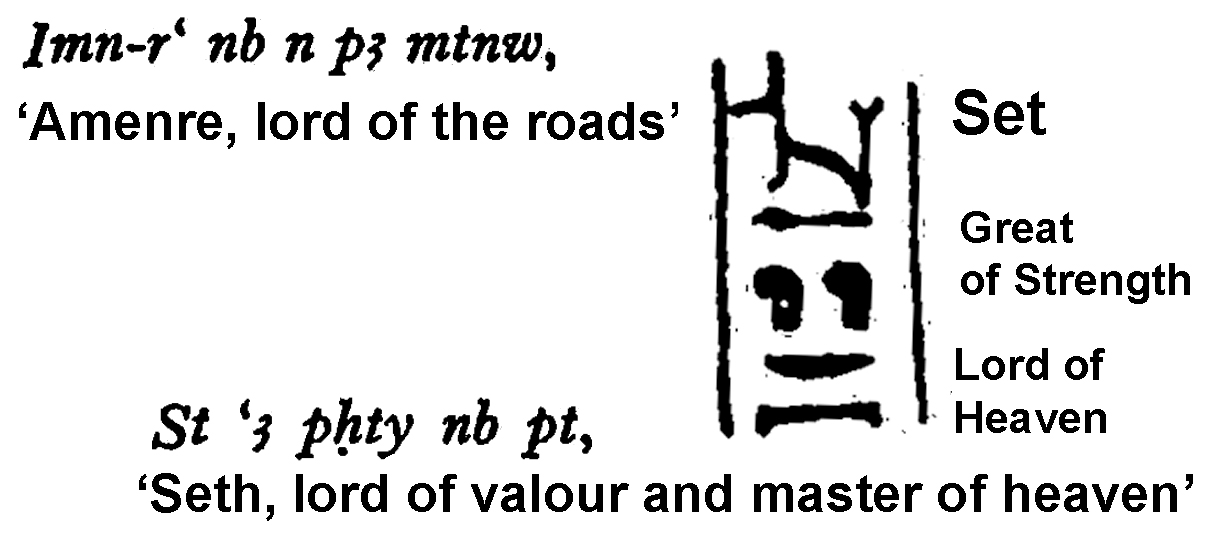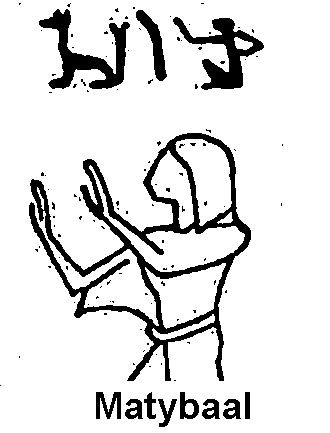
STELA OF MATYBAAL (Aswan Museum No. 16), sandstone, H. 44cm, Br. 30cm. and W. 5 cm. (PLATE XVIII, FIG 4)
|
 STELA OF MATYBAAL (Aswan Museum No. 16), sandstone, H. 44cm, Br. 30cm. and W. 5 cm. (PLATE XVIII, FIG 4) |
|
This stela was found in the 18th dynasty temple built by Amenhotep III, in Nubia. "There are few sites in Lower Nubia which have produced so many stelae as did Es-Sebua'." (Five Stelae..., page 45) "Wadi es-Sebua, or Valley of the Lions (so-called because of the sphinx-lined approach to the temple forecourts) (), is the site of two New Kingdom Egyptian temples." "The first temple was built by the 18th Dynasty Pharaoh Amenhotep III and subsequently restored by Ramesses II." Originally likely dedicated "to one of the local Nubian forms of Horus", "his representations were altered to Amun at a later point in time." This temple suffered damages during the Amarna period, but Ramesses II "later restored and extended Amenhotep III's temple by building structures in front of the pylon." (Wikipedia source, https://en.wikipedia.org/wiki/Wadi_es-Sebua ) Eleven stelae were discovered in the Temple of Ramesses II and five more were found in the Temple of Amenhotep III (Amenophis III), which is south of Ramesses' temple. "These have been made by visitors or by people who lived in the place some time after the erection of the temple." Labib Habachi shares photos and line drawings of these five stelae, (Five Stelae from the Temple of Amenophis III at Es-Sebua') One is of particular interest because it features the god Set. "This stela again has two registers. The upper one shows the figures of two divinities sitting opposite each other, dressed in short kilts and tails which appear in front projecting between the knees. They each hold a w3s-sceptre in one hand and an offering table stands between them. The god to the (spectator's) left wears a crown formed of two feathers and is qualified as :Imn-r' nb n p3 mtmw, 'Amenre, lord of the roads'. The god opposite is styled: St '3 phty nb pt, 'Seth, lord of valour and master of heaven' He is shown with the head of his characteristic animal and is wearing the double crown."
 Set's titles can also be translated "Great of Strength", "Lord of Heaven" (Set --- Aapehty, Neb Pet) The lower register features 'Reshep', and a man "raising his arms in adoration" ('dua'). He "was careful to show himself adoring both Egyptian and Semitic divinities. This circumstance which appears frequently in Ramesside times inclines us to assign the stela to that period." The man's name is 'Matybaal', written with three determinatives. The first denotes "Set", and it's a theophoric name, which is a statement about the deity: "Righteous is Baal". The throwing stick T14 is a second determinative on the name Baal, indicating that it is Set (the first glyph) as the Foreigner in question-- that is, "Set in his name of Baal". Lastly, there is a hieroglyph for 'man', "which is the usual masculine determinative."

(From _Five Stelae from the Temple of Amenophis III at Es-Sebua' now in the Aswan Museum_, by Labib Habachi, Kush Journal, Vol. 8, 1960), with additional help by S.E.B. Logan.
  
|